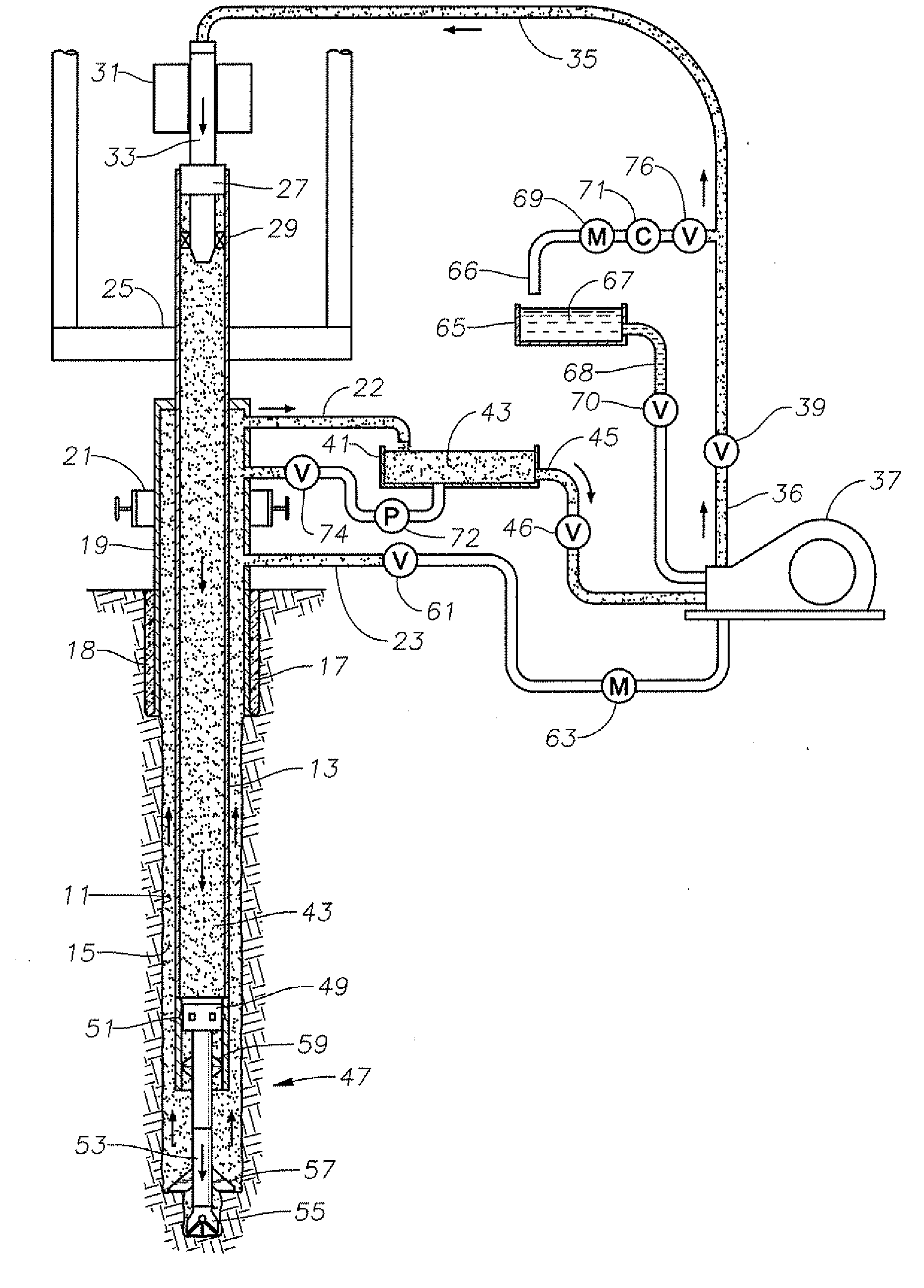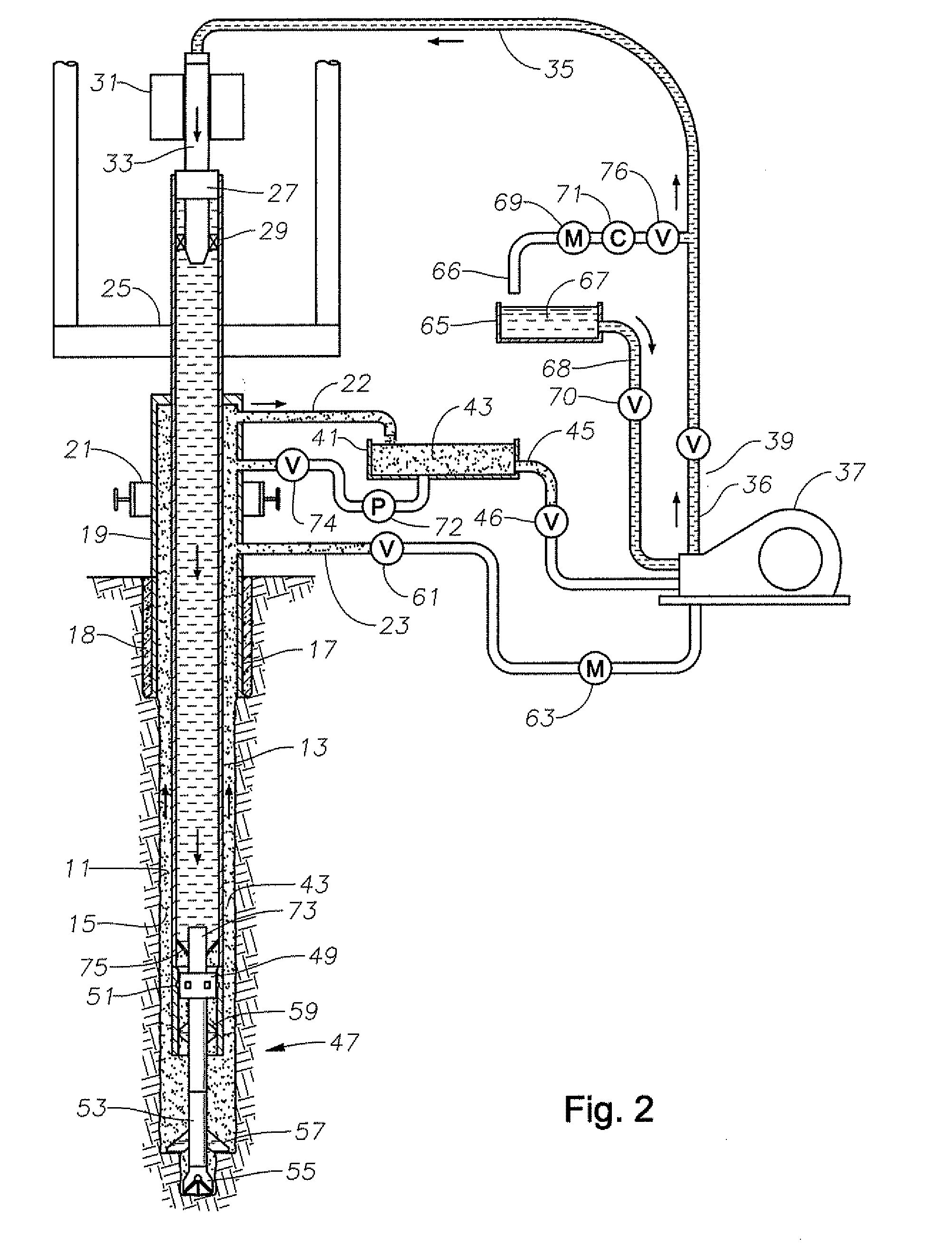Monitoring Flow Rates While Retrieving Bottom Hole Assembly During Casing While Drilling Operations
a technology of flow rate and casing, which is applied in the direction of drilling pipes, surveying, borehole/well accessories, etc., can solve the problems of increasing the hydrostatic pressure of the fluid in the annulus, and the operator may temporarily cease to flow fluid down the annulus
- Summary
- Abstract
- Description
- Claims
- Application Information
AI Technical Summary
Benefits of technology
Problems solved by technology
Method used
Image
Examples
Embodiment Construction
[0021]Referring to FIG. 1, a borehole 11 is shown being drilled. A casing string 13 is lowered into borehole 11. An annulus 15 is located between the sidewall of borehole 11 and casing string 13. One or more strings of casing 17 have already been installed and cemented in place by cement 18, although the drawings shows only one casing string for convenience, Annulus 15 thus extends from the bottom of casing string 13 up the annular space between casing string 13 and casing 17.
[0022]A wellhead assembly 19 is located at the surface. Wellhead assembly 19 will differ from one drilling rig to another, but preferably has a blowout preventer 21 (BOP) that is capable of closing and sealing around casing 17. An annulus outlet flowline 22 extends from wellhead assembly 19 at a point above BOP 21. An annulus inlet flowline 23 extends from wellhead assembly 19 from a point below BOP 21.
[0023]Casing string 13 extends upward through an opening in rig floor 25 that will have a set of slips (not sh...
PUM
 Login to View More
Login to View More Abstract
Description
Claims
Application Information
 Login to View More
Login to View More - R&D
- Intellectual Property
- Life Sciences
- Materials
- Tech Scout
- Unparalleled Data Quality
- Higher Quality Content
- 60% Fewer Hallucinations
Browse by: Latest US Patents, China's latest patents, Technical Efficacy Thesaurus, Application Domain, Technology Topic, Popular Technical Reports.
© 2025 PatSnap. All rights reserved.Legal|Privacy policy|Modern Slavery Act Transparency Statement|Sitemap|About US| Contact US: help@patsnap.com



